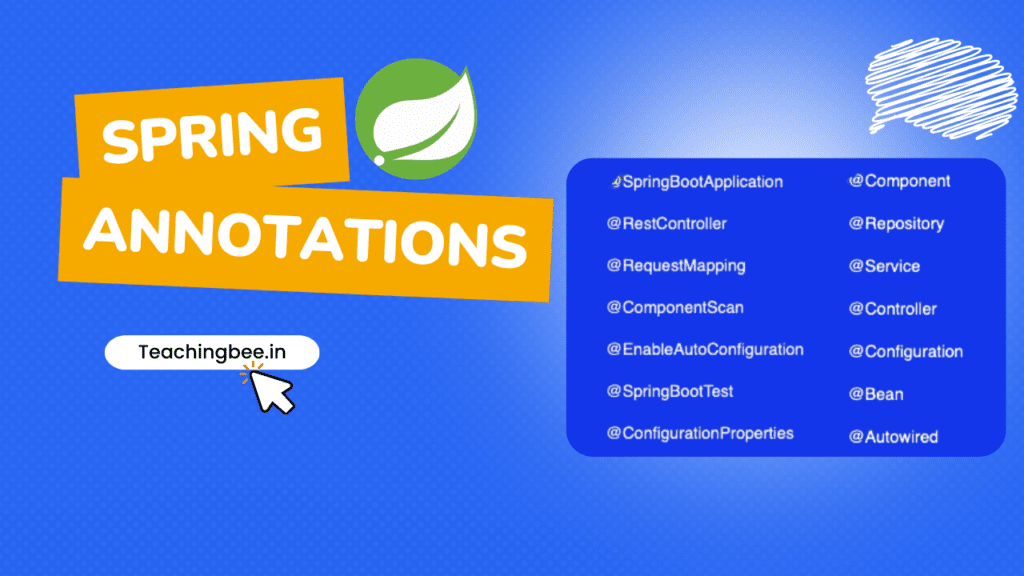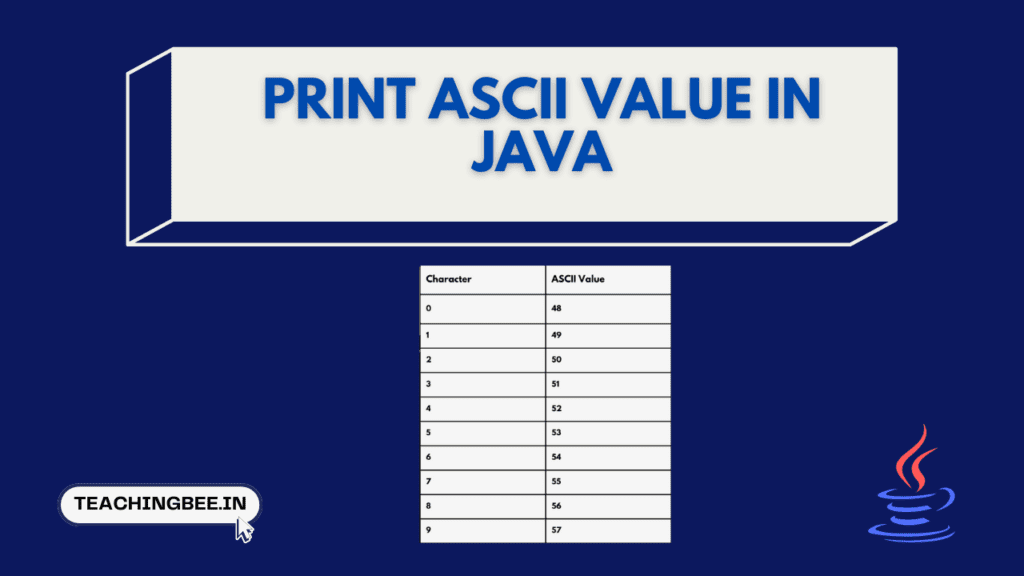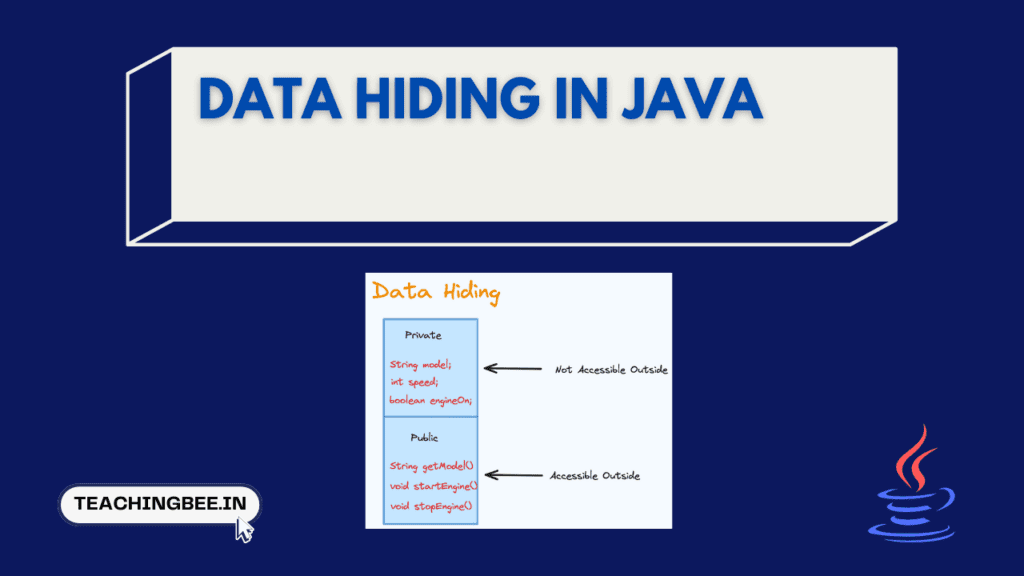Table of Contents
ToggleIntroduction
The Spring Framework is one of the most popular Java development frameworks. It promotes good software engineering practices and aims to simplify enterprise Java development. An important aspect of Spring is its extensive use of annotations.
This article will provide a comprehensive overview of annotations within the Spring Framework. You’ll learn what annotations are, why they are useful in Spring, the different types of built-in Spring annotation, how annotations enable dependency injection, advanced uses of spring annotation, best practices, and more. By the end, you’ll understand the critical role annotations play in modern Java development with Spring.
What Are Spring Annotations in Java?
Annotations in Java allow developers to add metadata to code without modifying program logic. Annotations don’t change how code executes, but they enable us to mark methods, classes, fields, parameters etc. with special declarations that can inform frameworks or tools about additional context and information.
Annotations are denoted using the @ symbol, for example:
@Override
void myMethod() {
// method body
}Here the @Override annotation indicates that myMethod overrides a superclass method.
Java supports several built-in annotations out of the box like @Override, @Deprecated, @SuppressWarnings etc. Frameworks like Spring also introduce custom annotations for providing configuration and behavior details.
Annotations make code self-documenting – improving readability and maintainability. They reduce the need for cumbersome XML configuration in favor of elegant declarative configuration.
The Role of Annotations in Spring Framework
The Spring Framework makes extensive use of custom annotations to drive dependency injection, configuration, and behavior. This allows for much simpler Java configuration than traditional XML.
For example, spring annotations can be used to mark classes as Spring-managed components, define beans, specify dependency relationships for autowiring, configure transactions, map requests, secure methods, and more.
XML configuration is still supported in Spring, but annotations are now the primary method for declarative configuration. Annotations provide:
- Simpler configuration with less code
- Tighter binding between code and configuration
- Improved readability and understanding
- Extensibility via custom annotations
- Refactoring-friendly codebase
Overall, annotations make Spring development faster, cleaner, and more productive.
Types of Spring Annotation
Spring provides numerous built-in annotations. Some key examples include:
Annotation Spring Core
@Component
The @Component annotation marks a class as a component for auto-detection in Spring context.It is used to mark Java classes as Spring beans for component scanning. @Component is a generic stereotype annotation that can be used instead of @Service, @Repository etc. for any Spring-managed component.
Classes annotated with @Component are automatically detected by Spring and registered as beans in the application context at runtime. This eliminates the need to define bean configurations explicitly in XML.
@Component scans whole packages recursively and handles bean initialisation. It is a convenient way to reduce configuration and enable auto-detection of Spring beans.
@Component
public class MyComponent {
}This is picked up by component scanning and registered as a Spring bean.
@Configuration
This annotation indicates a class can be used by the Spring container as a source of bean definitions.
The @Configuration annotation in Spring indicates that a class declares one or more @Bean methods and serves as a source of bean definitions for the Spring application context. @Configuration classes are analogous to XML configuration files in traditional Spring applications.
The @Bean annotation tells Spring to instantiate, configure and manage the objects produced by those methods. @Configuration classes promote reuse and help reduce configuration duplication.
@Configuration
public class Config {
@Bean
public MyBean myBean() {
return new MyBean();
}
}The above spring annotation declares one or more @Bean methods to instantiate objects.
@Bean
Annotation that declares a method to create a bean. The @Bean annotation is used to indicate that a method instantiates, configures and initializes a new object that will be managed by the Spring IoC container.
It tells Spring that the method’s return value should be registered as a bean in the application context. The bean can later be retrieved from the container via dependency injection
@Bean
public UserRepository userRepository() {
return new UserRepository();
}Above code handles bean registration instead of XML.
@Autowired
This annotation wires a bean into another bean. The @Autowired annotation provides automatic dependency injection in Spring framework. It can be used to inject object dependencies for beans managed by the Spring container.
When added to a constructor or field, Spring will locate a bean that matches the type and inject it automatically. This removes the need to manually lookup dependencies and wire them together. Some key features are that it helps decouple components and enables loose coupling, it integrates with Spring’s exception handling to detect wiring issues, and it can even wire arrays and collections of beans.
@Autowired private UserRepository repo;
The above code Injects an instance of UserRepository.
@Qualifier
It is used with @Autowired to resolve conflicts for beans with the same type. The @Qualifier annotation is used along with @Autowired to resolve ambiguity when there are multiple beans of the same type that can be injected. It provides finer control over dependency injection and allows you to specify which exact bean should be wired into a field or parameter.
@Autowired
@Qualifier("mainRepository")
private UserRepository repo;Allows selecting specific bean by name.
Spring Boot Annotations
Let’s now discuss annotations that are provided in Spring Boot.
@SpringBootApplication
Enables auto-configuration and component scanning:
@SpringBootApplication
public class Application {
public static void main(String[] args) {
SpringApplication.run(Application.class, args);
}
}Convenience annotation to enable key capabilities.
@RestController
Indicates a controller that serialize responses to REST requests:
@RestController
@RequestMapping("/api")
public class MyController {
}Handles REST endpoints instead of @Controller.
Spring Annotations Cheat Sheet
Spring Core Annotations
| Annotation | Description |
|---|---|
| @Component | Generic stereotype for any Spring-managed component |
| @Repository | Stereotype for persistence layer components like DAOs |
| @Service | Stereotype for service layer components |
| @Controller | Stereotype for presentation layer components like MVC controllers |
| @Configuration | Indicates a class can be used by Spring container as a source of bean definitions |
| @Bean | Method-level annotation to declare a bean |
| @Autowired | Wires a bean into another bean |
| @Qualifier | Used with @Autowired to resolve conflicts for beans with same type |
| @Value | Injects external property value into a bean |
| @Scope | Configures scope of bean as singleton, prototype etc. |
| @PostConstruct | Callback after bean initialization |
| @PreDestroy | Callback before bean destruction |
| @Transactional | Declarative transaction management |
| @Enable* | Enables various capabilities like transactions, caching, aspects etc. |
Spring Boot Annotations
| Annotation | Description |
|---|---|
| @SpringBootApplication | Enables Spring Boot auto-configuration and component scanning |
| @RestController | Indicates a controller that serialize responses to REST requests |
| @RequestMapping | Maps HTTP requests to handler methods in MVC controllers |
| @ComponentScan | define packages to scan for components |
| @EnableAutoConfiguration | Enable auto-config |
| @SpringBootTest | Testing annotation |
| @ConfigurationProperties | Bind properties to beans |
Spring Data Annotations
| Annotation | Description |
|---|---|
| @Quer | Declare finder query expressions |
| @Modifying | For modify queries |
| @Param | Bind query parameter to method param |
| @Entity | Mark domain object as entity |
| @EnableAutoConfiguration | Enable auto-config |
| @SpringBootTest | Testing annotation |
| @ConfigurationProperties | Bind properties to beans |
There are also other annotations provided in packages like Spring MVC, Spring Data, Spring Cloud, Spring Kafka, etc. The total number is likely over 50+ but the ones listed above are the most commonly used.
This guide covered some of the major ones to get you started using annotations for cleaner Spring code!
Best Practices for Using Spring Annotation
When leveraging annotations effectively, keep these guidelines in mind:
- Don’t abuse annotations. Use XML for complex configs.
- Avoid annotations that create strong coupling between components
- Prefer classpath scanning over @Configuration classes where possible
- Use repeatable annotations for better structuring
- Follow naming conventions and standards for custom annotations
- Ensure annotations are processed properly by setting up component scanning
Spring Annotation provide power, but judicious use following best practices prevents common issues.
Conclusion
We’ve explored annotations as the backbone of configuration and dependency management in modern Spring development. Built-in and custom Spring annotations enable succinct and declarative configuration using industry best practices.
Mastering spring annotations in java allows you to build cleanly architected, maintainable and extendable applications. They reduce boilerplate code and improve productivity greatly. With a solid understanding of spring annotations in java, you can leverage the full power of Spring to create robust Java enterprise applications with ease.
Try out our free resume checker service where our Industry Experts will help you by providing resume score based on the key criteria that recruiters and hiring managers are looking for.
References
- “Spring Framework Annotations” – Spring Docs
- “Getting Started with Annotations” – Baeldung
- “Best Practices for Using Annotations” – VMware Spring Professionals
- “Custom Annotation in Spring” – Javarticles
FAQ Related To Spring Annotations
How many annotations are there in Spring?
There are over 30+ annotations provided by the Spring Framework and Spring Boot. There are also other annotations provided in packages like Spring MVC, Spring Data, Spring Cloud, Spring Kafka, etc. The total number is likely over 50+ but the ones listed above are the most commonly used.
What is the use of @SpringBootApplication annotation?
@SpringBootApplication makes it easy to build Spring-based applications with auto-configuration, component scan and Spring MVC enabled by default. It is a convenience annotation that combines three key capabilities.
What is Spring @data annotation?
@Data from Project Lombok is a shortcut annotation that autogenerates getter/setter methods to reduce boilerplate code in Spring bean and model classes. It is not a Spring annotation but commonly used by Spring developers.
Why do we use @autowired annotation?
@Autowired is very useful for streamlining Spring application configuration by automatically injecting bean dependencies without tight couplings or manual wiring. This improves code modularity and reduces verbosity.




